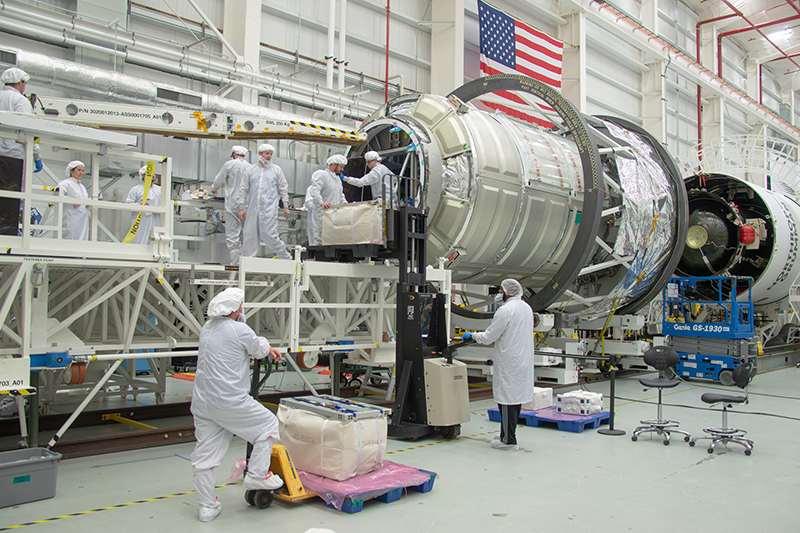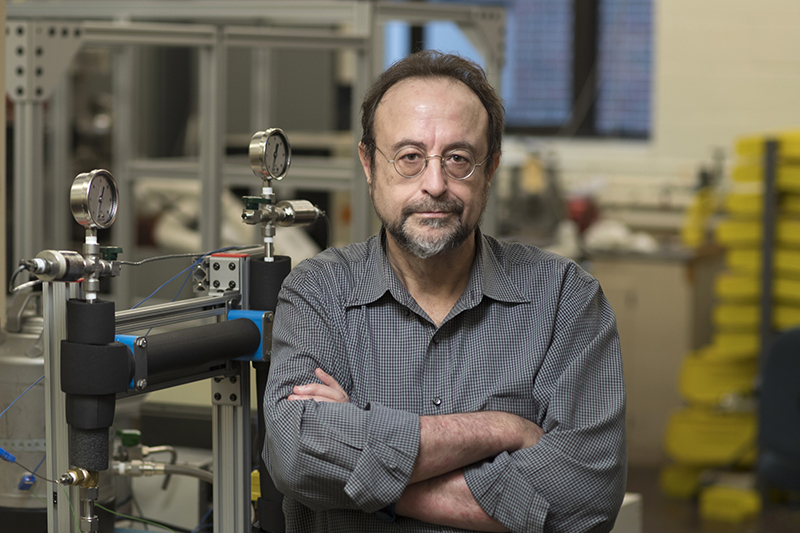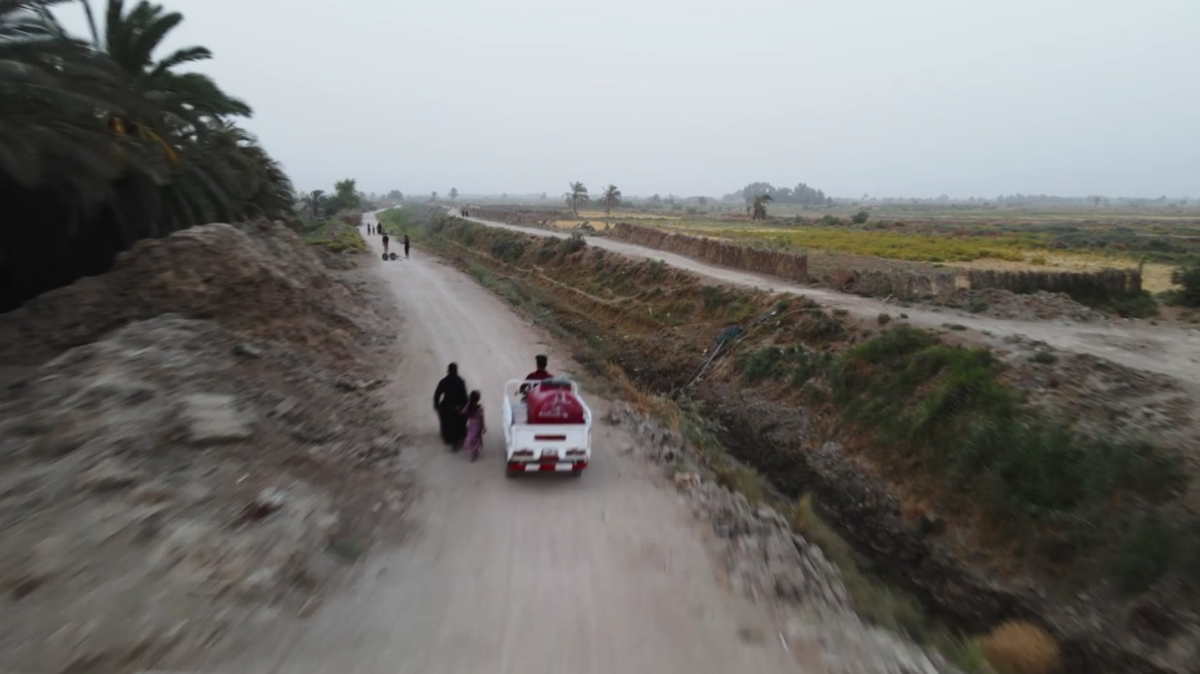
A Purdue University experiment aiming to find out how condensation works in reduced gravity is onboard Northrop Grumman’s 19th commercial resupply services mission to the International Space Station for NASA: NASA/Danielle Johnson
By Glynn Wilson –
WASHINGTON, D.C. — On two fronts the imaginations of those who write science fiction are gradually coming into raw focus.
For those who see the world spinning toward life-ending apocalypse, look no further than the very “cradle of civilization,” home to the Garden of Eden in the Bible, according to some scholars.
According to a team of news reporters dispatched to Mesopotamia to cover the climate crisis there in recent months by no less than The New York Times, the word Mesopotamia means “land between rivers.”
“It is where the wheel was invented, irrigation flourished and the earliest known system of writing emerged. The rivers here, some scholars say, fed the fabled Hanging Gardens of Babylon and converged at the place described in the Bible as the Garden of Eden.”
Now, so little water remains in some villages near the Euphrates River, they report, that families are dismantling their homes, brick by brick, piling them into pickup trucks … and driving away.
“You would not believe it if I say it now, but this was a watery place,” said Sheikh Adnan al Sahlani, a science teacher … in southern Iraq near Naseriyah, a few miles from the Old Testament city of Ur, which the Bible describes as the hometown of the Prophet Abraham.
These days, “nowhere has water,” he said. Everyone who is left is “suffering a slow death.”
A CLIMATE WARNING FROM THE CRADLE OF CIVILIZATION
Hope in Space
On the same day this story appeared in my inbox, Purdue University made a startling announcement containing some slight hope for the future of humanity beyond Earth.
To live on the moon or Mars, they say, humans will need heat and air conditioning that can operate long term in reduced gravity and temperatures hundreds of degrees above or below what we experience on Earth.
Building these systems requires knowing how reduced gravity affects boiling and condensation, which all heating, ventilation and air conditioning systems use to operate in Earth’s gravity.
A Purdue University experiment launching August 1 on Northrop Grumman’s 19th commercial resupply services mission to the International Space Station for NASA aims to collect data scientists need to answer decades-old questions about how boiling and condensation work in reduced gravity.
“We have developed over a hundred years’ worth of understanding of how heat and cooling systems work in Earth’s gravity, but we haven’t known how they work in weightlessness,” said Issam Mudawar, Purdue’s Betty Ruth and Milton B. Hollander Family Professor of Mechanical Engineering.
The NG-19 spacecraft is expected to launch at 8:31 p.m. on Tuesday from the Mid-Atlantic Regional Spaceport at NASA’s Wallops Flight Facility in Virginia and arrive at the space station Aug. 4.
Onboard this flight is a module for conducting the second experiment of a facility called the Flow Boiling and Condensation Experiment (FBCE), which has been collecting data on the space station since August 2021.
Last July, Mudawar and his students finished their first experiment gathering data from a module of FBCE on the space station that measures the effects of reduced gravity on boiling. When the facility’s additional components arrive with the NG-19 spacecraft, the researchers will be able to conduct the second experiment, which will investigate how condensation works in a reduced-gravity environment.
Both experiments’ modules will remain in orbit through 2025, allowing the fluid physics community at large to take advantage of this hardware.
“We are ready to literally close the book on the whole science of flow and boiling in reduced gravity,” Mudawar said.

Issam Mudawar’s research on heat transfer could enable space habitats to be built in extreme environments like the moon: Purdue University/John Underwood
To develop this project, Mudawar’s lab worked with NASA’s Glenn Research Center in Cleveland, which engineered and built the flight hardware funded by the agency’s Biological and Physical Sciences Division at NASA Headquarters. The team spent 11 years developing FBCE hardware to fit into the Fluids Integrated Rack on the orbiting laboratory.
The project’s answers on boiling and condensation will not only support exploration on the moon or Mars but also help spacecraft to travel longer distances. The farther missions are from Earth, the more likely that the spacecraft for those missions will need innovative power and propulsion systems, such as ones that are nuclear thermal or electric. Compared to other types of processes that enable heating and cooling in space, boiling and condensation would be much more effective at transferring heat for spacecraft with these systems.
In addition, the data could help enable spacecraft to refuel in orbit by providing scientific understanding of how reduced gravity affects the flow boiling behavior of the cryogenic liquids spacecraft use as propellant.
This is among NASA’s largest and most complex experiments for fluid physics research. Mudawar’s team is preparing a series of research papers unpacking data the FBCE has collected on the space station, adding to more than 60 papers they have published on reduced gravity and fluid flow since the project’s inception.
“The papers we have published over the duration of this project are really almost like a textbook for how to use boiling and condensation in space,” Mudawar said.
With more than 30,000 citations, Mudawar is one of the most highly cited researchers in the field of heat transfer. Google Scholar ranks him No. 1 in flow boiling, spray cooling, microchannels, and microgravity boiling. He also is the most cited author in the International Journal of Heat and Mass Transfer.
For more than a decade, Mudawar and his students have been developing three sets of predictive tools to be validated using FBCE data. One set of tools puts the data into the form of equations that engineers can use to design space systems. Another set identifies fundamental information about fluid physics from the data, and the third set is computational models of the fluid dynamics.
All together, these models would make it possible to predict which equipment designs could operate in lunar and Martian gravity.
“The amount of data coming out of the FBCE is just absolutely enormous, and that’s exactly what we want,” Mudawar said.
NASA to Test Nuclear Fission Rocket
At the same time, in less than four years, NASA could be testing a nuclear fission rocket system for space travel as a propulsion system that could one day get astronauts to the Moon or Mars in half the time of today’s technology.
.
According to new reporting from the New York Times Science desk, BWX Technologies based in Lynchburg, Va., will build the nuclear fission reactor at the heart of the engine in this $499 million program.
So if the politicians of the world can’t get together and solve our most pressing problems here on Earth, maybe a few of us might survive to travel to the stars, like the adventures of Star Trek. We will see.
Before you continue, I’d like to ask if you could support our independent journalism as we head into one of the most critical news periods of our time in 2024.
The New American Journal is deeply dedicated to uncovering the escalating threats to our democracy and holding those in power accountable. With a turbulent presidential race and the possibility of an even more extreme Trump presidency on the horizon, the need for independent, credible journalism that emphasizes the importance of the upcoming election for our nation and planet has never been greater.
However, a small group of billionaire owners control a significant portion of the information that reaches the public. We are different. We don’t have a billionaire owner or shareholders. Our journalism is created to serve the public interest, not to generate profit. Unlike much of the U.S. media, which often falls into the trap of false equivalence in the name of neutrality, we strive to highlight the lies of powerful individuals and institutions, showing how misinformation and demagoguery can harm democracy.
Our journalists provide context, investigate, and bring to light the critical stories of our time, from election integrity threats to the worsening climate crisis and complex international conflicts. As a news organization with a strong voice, we offer a unique, outsider perspective that is often missing in American media.
Thanks to our unique reader-supported model, you can access the New American journal without encountering a paywall. This is possible because of readers like you. Your support keeps us independent, free from external influences, and accessible to everyone, regardless of their ability to pay for news.
Please help if you can.
American journalists need your help more than ever as forces amass against the free press and democracy itself. We must not let the crypto-fascists and the AI bots take over.
See the latest GoFundMe campaign here or click on this image.
Don't forget to listen to the new song and video.
Just because we are not featured on cable TV news talk shows, or TikTok videos, does not mean we are not getting out there in search engines and social media sites. We consistently get over a million hits a month.
Click to Advertise Here
















